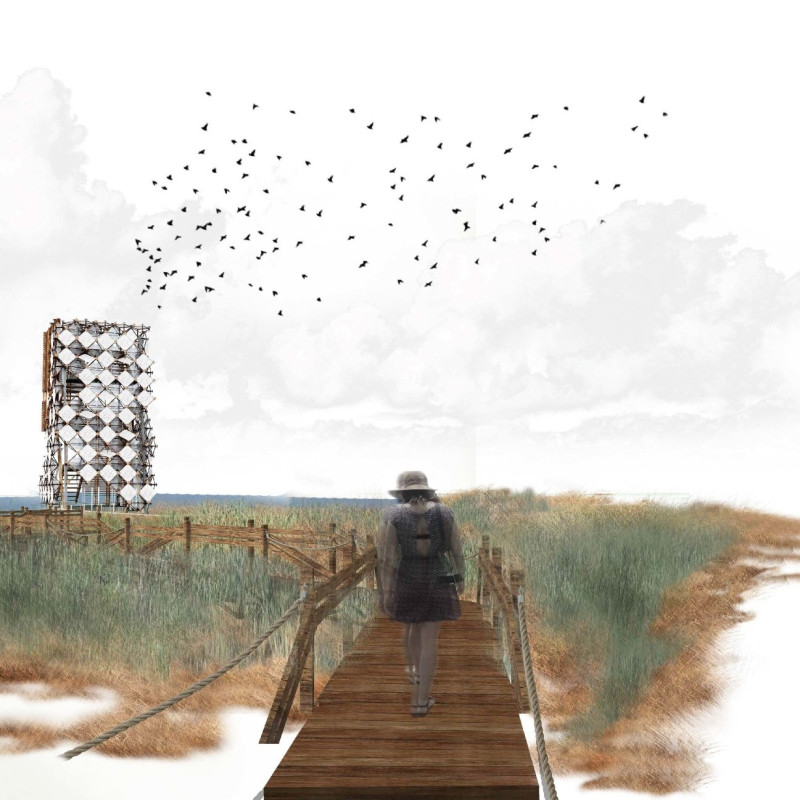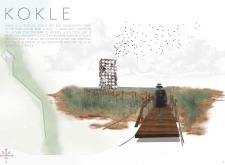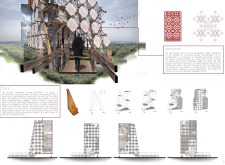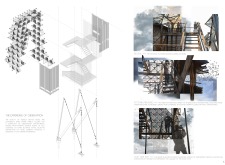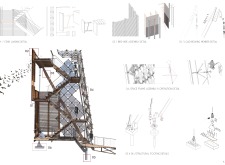5 key facts about this project
# Analytical Report: KOKLE Observation Tower in Pape Nature Park, Latvia
## Overview
The KOKLE observation tower is situated in Pape Nature Park, Latvia, and serves as a bird observation point that emphasizes local craftsmanship alongside modern architectural practices. The design reflects Latvian cultural heritage through its distinct material usage and construction techniques, aimed at enhancing local identity while encouraging interaction with the natural environment.
## Spatial Strategy
The observation tower is inspired by the traditional kokle, a Latvian musical instrument, embodying themes of connectivity to land and heritage. The architectural configuration integrates elevated pathways and viewing platforms that provide panoramic vistas while maintaining minimal disturbance to the surrounding ecosystem. This layout promotes a dual function of offering secure birdwatching opportunities while serving as a protective habitat for avian species.
## Materiality and Construction
The structure incorporates locally sourced timber for its framework, evoking warmth and a direct relationship with the landscape. Glass panels are utilized in the façade to afford unobstructed views, ensuring a physical connection between observers and wildlife. Lightweight steel frames enhance structural integrity without compromising the design's overall lightness. Additionally, a fabric mesh serves as a visual and light filter that allows for discreet wildlife observation.
Artisan-crafted panels featuring a cross-stitch pattern echo traditional Latvian needlework, contributing to both the tower's aesthetic and its functional attributes. This thoughtful selection of materials showcases local craftsmanship while reinforcing the narrative of cultural significance.
## Environmental Integration
The tower's design is harmonized with its natural setting, allowing for minimal disruption to underground flora and fauna. Elevated structures preserve the existing ground cover, facilitating birdwatching while also providing a habitat through its intricate façade. The design promotes an immersive observational experience, consisting of layered platforms that enhance engagement with the landscape, featuring fragmented views and comprehensive 360-degree perspectives. Sheltered areas equipped with seating further invite visitors to pause and connect with nature, enriching the overall user experience.
In addition to its structural and environmental considerations, the project fosters community engagement by involving local artisans in its construction, thereby creating jobs and supporting traditional craftsmanship techniques, which contribute to a shared identity among visitors and the surrounding community.


